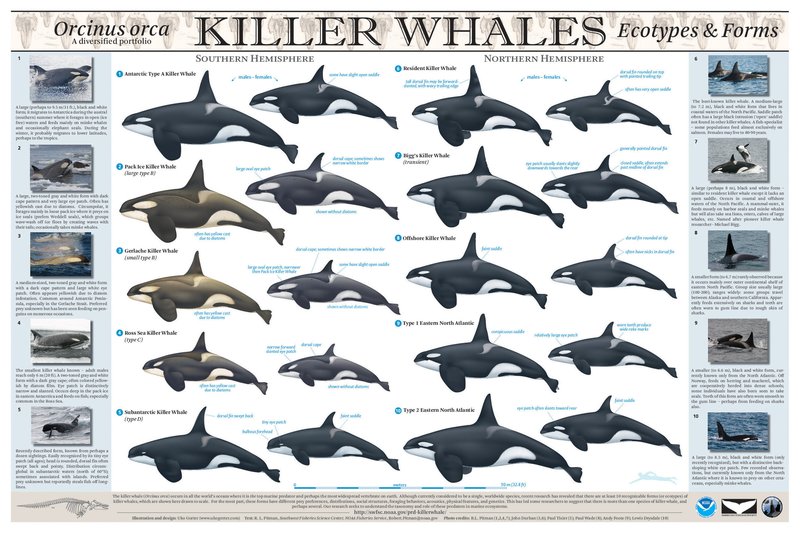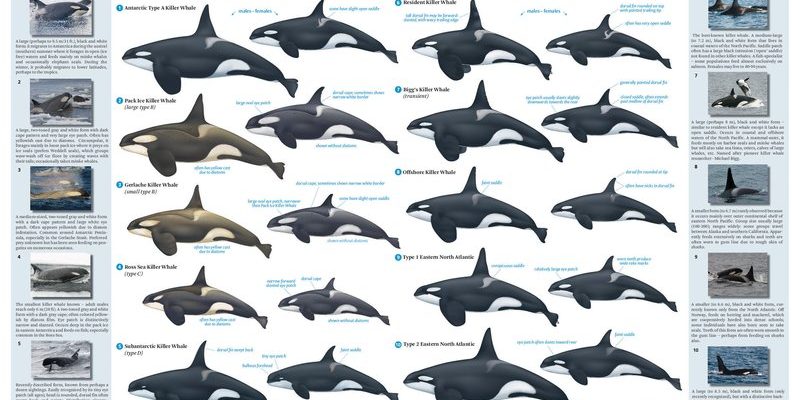
The orca belongs to a family called *Delphinidae*, which highlights their connection to dolphins. But what might surprise you is that these animals have a unique evolutionary path. They’ve adapted to diverse environments, developed complex social structures, and demonstrated remarkable intelligence. Let’s dive deeper into their captivating history and see how orcas have changed through the ages.
Origins of the Orca
The evolutionary roots of orcas can be traced back about **11 to 15 million years ago**. They are believed to have evolved from land-dwelling mammals, much like many other marine creatures. Imagine a scenario where prehistoric animals ventured into the water, adapting over time to their aquatic surroundings. One of the most significant ancestors of the orca is the *Basilosaurus*, which was an early whale that exhibited both aquatic and terrestrial traits.
Over time, these ancestors evolved to thrive in marine environments. They began developing key characteristics, such as sleek bodies for swimming and powerful tails for propulsion. It’s fascinating to think that today’s orcas are the product of millions of years of adaptation, fine-tuning their bodies to become some of the most efficient predators in the ocean.
Another interesting point to consider is that orcas are not a single species. In fact, there are different ecotypes of orcas, which have adapted to various prey and environmental conditions. This is like how some birds have different beak shapes based on the food they eat. Scientists recognize three main ecotypes: transient, resident, and offshore orcas, each uniquely suited to their lifestyles and habitats.
The Anatomy of the Orca
When examining an orca, one can’t help but admire its **striking anatomy**. These animals can grow up to 32 feet in length and weigh several tons! Their distinctive black and white coloration isn’t just for show—it plays a crucial role in their survival. The dark coloring offers camouflage while hunting and gives them an edge over their prey. Imagine swimming in the ocean and suddenly seeing a massive black shape appear; it’s both intimidating and awe-inspiring.
Orcas have several adaptations that aid their hunting strategies. Their **large brains**, weighing about 15 pounds, indicate high intelligence, including problem-solving and social behaviors. They are equipped with powerful jaws and sharp teeth; some can even take down large prey like seals and whales. Learning about their anatomical traits helps us understand why they’re considered apex predators in marine ecosystems.
These animals also boast **complex communication** skills. They use a variety of vocalizations, clicks, and whistles to communicate with each other. Picture a family gathering where everyone is chatting away—this is how orcas socialize. Their ability to communicate effectively ensures they work together while hunting and building strong social bonds.
Social Structures and Behavior
Orcas are known for their highly structured social systems. They typically live in groups called **pods**, which can consist of a few to several dozen individuals. The bonds within these pods are incredibly strong, often involving family units that can last for years, sometimes even a lifetime. It’s touching to imagine how these whales support each other, much like a close-knit family.
Each pod usually has its own distinct **dialect**, which means their vocalizations can vary significantly. This is similar to how different families or communities might have unique ways of speaking. These dialects can help orcas identify each other and strengthen group cohesion. It’s a testament to their intelligence and emotional depth.
Interestingly, orcas are also known for their cooperative hunting strategies. They can work together to herd schools of fish or even beach themselves temporarily to catch seals. Here’s the thing: this teamwork is a learned behavior passed down from generation to generation. Imagine growing up watching your parents fish together and then employing those skills in your own hunting endeavors.
Habitat and Distribution
Orcas are incredibly versatile in their choice of habitat. You can find them in a variety of environments, from warm coastal waters to icy arctic regions. Their ability to adapt to different ecological niches showcases their resilience. They are widely distributed across the globe, with the highest populations found in regions like the **North Pacific** and **North Atlantic** oceans.
The diversity of habitats means different orca ecotypes have unique preferences. For example, *resident orcas* prefer coastal waters, where they can easily find food. In contrast, *transient orcas* roam further, hunting larger prey. This adaptability is essential for their survival and reflects how these magnificent creatures have evolved to thrive in various environments.
One fascinating aspect of their habitat choice is the impact of human activity. Overfishing, pollution, and climate change all pose threats to orca populations. Understanding their habitat needs can help us protect these oceans and the life within them. Conservation efforts are crucial to ensure that future generations can appreciate the beauty of orcas in their natural environment.
Conservation Status of Orcas
Despite their strength and adaptability, orcas face numerous threats. Their populations are declining due to several factors, including **pollution**, **habitat loss**, and **overfishing**. Some ecotypes are particularly vulnerable; for example, the Southern Resident orcas of the Pacific Northwest are critically endangered. You might be wondering how these factors impact their survival.
Pollution can lead to the accumulation of harmful toxins in their bodies, affecting their overall health and reproductive success. Additionally, habitat loss from shipping lanes and coastal development disrupts their hunting grounds. It’s like moving into a new neighborhood where all the best grocery stores have shut down—survival becomes a significant challenge.
Conservation initiatives are underway to protect orca populations. Efforts include creating marine protected areas, regulating fishing practices, and raising awareness about the impacts of climate change. Each of us has a role to play in supporting these efforts, whether it’s through advocacy, education, or simply choosing sustainable seafood options. Protecting orcas ensures they’re here for generations to come.
The evolutionary journey of the orca is truly captivating. From their land-dwelling ancestors to their status as formidable ocean predators, orcas embody resilience and adaptability. Their complex social structures, communication skills, and diverse habitats highlight the richness of their existence.
As we learn more about these remarkable creatures, it’s essential to remember our responsibility to protect them. Conservation efforts are crucial to ensuring that orcas continue to thrive in our oceans. By appreciating their history and understanding their current challenges, we can all contribute to a future where these incredible animals flourish. Remember, the story of the orca is not just about their past; it’s about their future—and ours as well.

